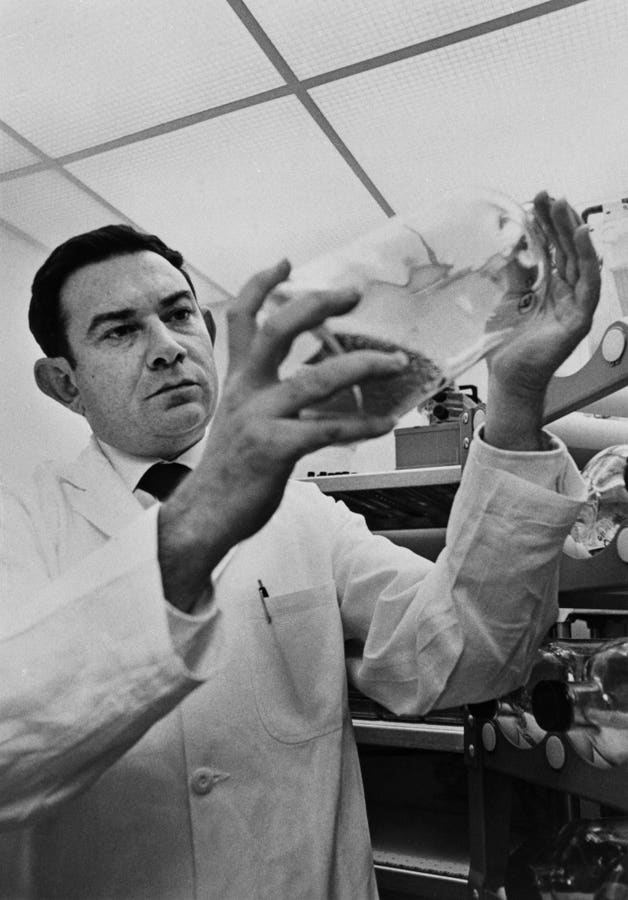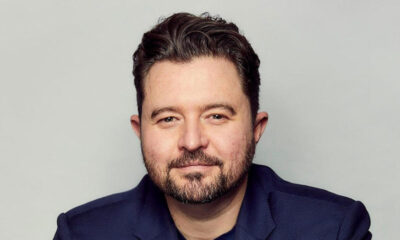Health
Why people cannot (yet) be physically immortal

This will use human cells stored and grown in the laboratory of the Stanford University Medical Center … [+]
A scientific legend, Leonard Hayflick, died in early August. Most non-scientists probably don’t know his name, but in the early 1960s he made a remarkable discovery. During experiments with human cells, he and a colleague, Paul Moorhead, discovered that our cells can divide only a limited number of times.
This discovery, although made at the level of an individual cell, has a dramatic implication: humans cannot live forever.
What Hayflick discovered was that after 40 to 60 rounds of splitting in half, cells simply don’t want to divide anymore. At that point, they enter a stage called senescence, and eventually they die. The number of divisions a cell can go through is now known as ‘Hayflick limit.â€
Prior to Hayflick’s experiments, many scientists believed that cells could divide forever. After all, every cell in our body comes from one original cell, and that cell came from our parents, and from their parents before them, and so on down the ages. It was therefore obvious that cells could continue to divide indefinitely. What’s more, in the early 20th century, Alexis Carrel (a Nobel Prize winner) claimed to have grown cells in his laboratories that continued to divide for decades, without any sign of deterioration.
(Aside: Jan Witkowski explained in a 1980 article that it was likely that Carrel’s apparently immortal cells had been quietly replenished, without Carrel’s knowledge, by members of his laboratory eager to keep the boss happy.)
Back to the Hayflick limit: because all our organs are destined to wear out, our bodies will simply die unless we can intervene and return the cells to their youthful state. This requires technology that has not yet been invented. Hayflick himself estimated that the limit of human lifespan is 125 years.
Hayflick’s limit presented an intriguing puzzle: How does a tiny, microscopic cell keep track of how many times it has divided? In other words, how can a cell know how old it is? Don’t all our cells have identical DNA? Hayflick himself had no solution for this, but a few decades later others figured it out.
The answer to this cellular ‘clock’ puzzle, it turns out, lies in our DNA. More specifically, it depends on the DNA sequences at the ends of our chromosomes, which are called telomeres.
Telomeres don’t actually do anything, and they seem very simple: they consist of a long sequence of six DNA bases, TTAGGG, that are repeated hundreds of times, from end to end. All our chromosomes end with telomeres at both ends.
So the point is: when a cell divides, it must copy all its chromosomes. The copying mechanism is not completely perfect, and it cannot go all the way to the end of the chromosome, so the new copy is slightly shorter. The telomere is getting shorter! Fortunately, we have a special enzyme called telomerase that solves this problem by adding a few extra copies of TTAGGG to the end of each chromosome, restoring the correct length. Problem solved, right?
Well no. Telomerase doesn’t work perfectly, and chromosomes sometimes shorten slightly each time they divide. When the chromosomes become too short, the cell can no longer divide and eventually dies.
And yes, scientists have explored the question of whether telomere length could be the key to longevity. No one has figured out a way to keep telomeres long, and it’s not clear whether this would help at all. On the contrary, as my Hopkins colleague Mary Armanios says This was evident from a study last yearLong telomeres can ensure the survival of individual cells, but they do not appear to prevent aging.
Does the Hayflick limit mean we really can’t live forever? Well, not necessarily. Some types of stem cells can produce ‘fresh’ cells that, in theory, could replenish our old cells. Perhaps one day we will have the technology to replace our organs with new ones, possibly grown in a laboratory, that will have the youth and energy of a 20-year-old. But without replacing our parts, we are destined to wear out, even if we manage to avoid cancer, infections, and the many other dangers that humans face.
Leonard Hayflick lived to be 96, an old age by today’s standards. It would have been appropriate if he had reached 125, the limit he estimated, but no human has ever done that. Yet.













